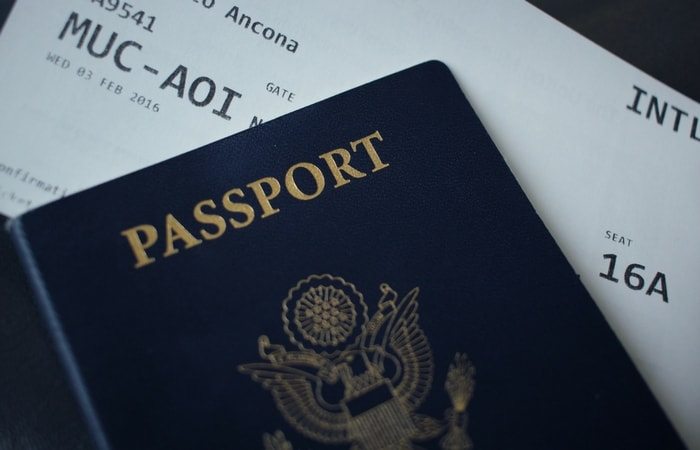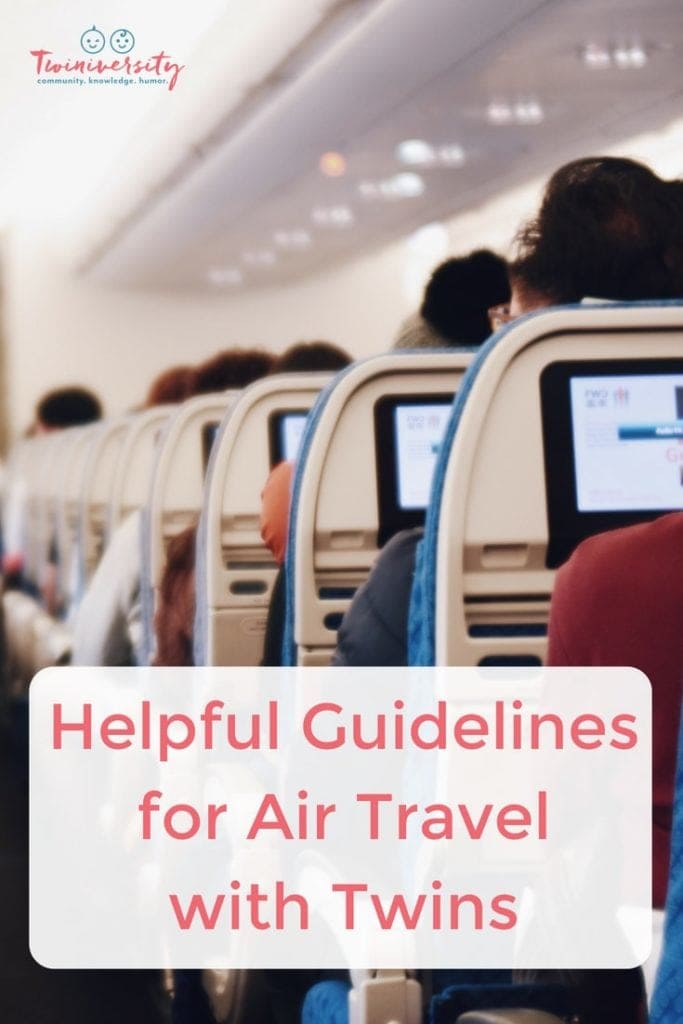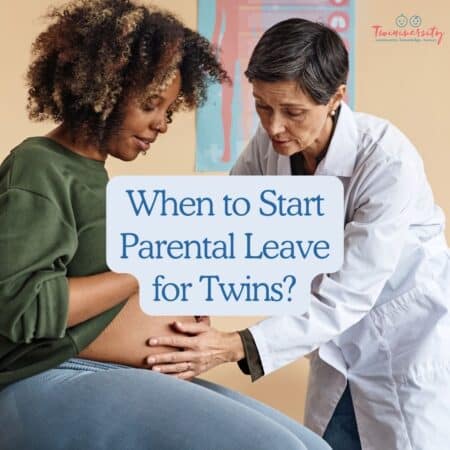Last updated on March 21st, 2022 at 04:55 pm
Traveling with children is stressful, especially with infants. With my singleton, I took complete advantage of the “free to fly until the age of 2 years old” policy. I’ve been asked why I haven’t taken advantage of it with my twins. Don’t get me wrong, “FREE” is very tempting, particularly when you make a 1200 mile drive every year. An hour and a half in an airplane sounds a lot better than 12 hours in a car, but still, the thought of flying with infant twins gives me anxiety. If you’re like me, knowledge is power, so here’s what you need to know when traveling with littles.
Age requirements for children
Infants as young as 2 days old are allowed to fly, however, if you are traveling with an infant 14 days old or younger (age depends on the specific airline) you will need a physician’s release stating it’s appropriate for the newborn to fly. You may travel with ONE infant in your lap without purchasing a ticket if:
- An infant is less than 2 years old and
- You are at least 18 years old and
- Traveling inside the United States
Be prepared to present proof of age for any child under the age of 18 years old. Birth certificate or passport will be accepted for proof of age. It is recommended that you bring a birth certificate for any lap infant.

A ticket is required if:
- Your child is 2 years of age or older
- Child turns 2 years of age during a trip
- Prefer the child to sit in a seat with approved restraints
- Have a second child (regardless of age) and you already have a child who will be sitting on your lap
- Traveling between countries, regardless of whether or not the child occupies a seat
Take note that you cannot have two lap infants in the same row because there are not enough oxygen masks. This is discussed in detail below in the section “On the plane”.
Need some twin parent friends? Get the support you need with a Twiniversity Membership. Benefits include a monthly twin parent club meeting on Zoom, access to a private Facebook group just for twin parents, and a video library of twin parenting lessons. Visit Twiniversity.com/membership to join today!
Getting through security
The TSA requires that only passengers who are 18 years of age and older show valid photo identification. If traveling with an infant in the U.S., you will not be required to show any ID for the infant. However, if you are traveling internationally, you will need a passport for your infant.
Breast milk, formula, and baby food are exempt from the TSA liquid requirements. You are allowed to bring more than 3.4 ounces of breast milk, formula, milk products, juice, bottled water, baby food and essential non-prescription infant/child medication through security. Unlike other liquids, you do not need to place these items in a zip-top bag. You must still declare them for inspection and it is likely you will need additional screening on these items. Not to worry, these screenings are completely harmless. Follow these guidelines if bringing ice packs and a cooler for breast milk or pre-mixed formula. It’s a good idea to purchase ready-made formula single-serving bottles for travel.
All passengers, regardless of age, will go through the airport security screening process. Children 12 and under can leave their shoes, light jackets, and headwear on during screening. Infants and children need to be removed from their carriers and carried through the walk-through metal detector. Infants may be carried in a sling through the walk-through metal detector but may be subject to additional screening. When traveling alone with multiples, you will need to carry both children through the metal detector at the same time. Children will not be separated from their parent. If you have TSA Pre-check, children up to the age of 12 are allowed to use Pre-check with you even if they do not have their own KTN (known traveler number).

Getting through with all the extras
Strollers and all baby carriers will need to be screened by X-ray and or manually. If you have a stroller and car seat, only one can be checked at the gate. If you are not planning to use the car seat on the plane, you will want to check it at the ticket counter. On some airlines, strollers over 20 lbs must be checked at the ticket counter and strollers under 20 lbs can be used in the airport and then checked at the gate. Check ahead with your carrier to find out their rules for stroller weight. If you must check your double stroller at the ticket counter, plan to use baby carriers throughout the airport.
Some airlines do not allow an additional carry-on or personal item for a non-ticketed infant. Your diaper bag will count as either your carry-on item or personal item. If this is the case, make your purse your diaper bag. Honestly, I can’t imagine having a suitcase, purse, diaper bag and three children to keep track of. Airline travel tips suggest you overpack on diapers, wipes, baby food, snacks and a change of clothes.

On the plane
A limit of two infants, less than two years old, per adult may travel together. So, if you are planning on flying alone with twins (you are my hero if you do), you will need to purchase a seat for one of them.
When two adults travel together with two lap infants, only one lap infant is allowed per row (this includes both sides of the row). This is due to oxygen mask allocation. The closest you can sit together is one row behind the other. Essentially the only way for two parents with lap twins to sit in the same row is to buy a seat for one of their infants. Lap infants are not allowed in the exit rows or the rows before and after the exit rows. Keep this in mind when choosing your seats.
Whether you buy a seat for your infant or get lucky enough to have an empty seat next to you, your infant will need to be securely fastened in a government approved Child Restraint System (CRS).
FAA approved Restraints:
- Must be manufactured on or after February 26, 1985
- Must be labeled: “Certified for use in motor vehicles and aircraft. This child restraint device conforms to all applicable federal motor vehicle safety standards.”
- Seats approved by the United Nations or Foreign Governments must have stamp/decal indicating foreign government approval
- 16” wide or smaller
- Rear-facing car seat for infants less than 20 lbs.
- Forward-facing restraints for children 20-40 lbs.
- Child Aviation Restraint System (CARES) is the only harness type non-car seat device approved for use on board. (CARES is a belt-and-buckle device that works in conjunction with the regular airplane seat belts and provides the same level of safety as a car seat. For more information check out kidsflysafe.com).

Other FAA rules to live by for air travel with little ones
Airlines require that car seats be placed in a seat next to a window so as to not interfere with other passengers’ mobility. Once your child is 40 lbs or above, they are free to use the airplane seat belts.
This is a lot of information to take in. And honestly, I’m still terrified to fly with my twins. At least I feel like I am now in the know when it comes to flying with infants, and that alone has a calming effect. All airlines have different policies and procedures, so always check with the airline prior to departure.
Good luck and safe travels to all!
Helpful links:

Amanda Hadley is a part-time photographer and full-time dishwasher, cook, maid and financial assistant to her 5-year-old daughter, one-year-old twins, and husband of 8 years. She loves to travel, take naps and Atlanta Braves baseball. Most days you will find her at home sifting through the massive piles of laundry and dishes, and getting as many cuddles as possible before the kiddos are too cool to hang out with mom.
Latest posts
- When to Start Parental Leave for Twins?
- The Best Twin Names for 2025 (Plus, Strategies for Naming Your Duo)
- Where to Find the Best Preemie Clothes for Your Preterm Twinnies
- Caring for Infant Twins After Leave: What Other Twin Parents Did
- Cleaning Baby Bottles: Care Tips and Hacks for Twin Parents
Related Articles
5 Tips for Taking an International Flight With Twins
10 Essentials When Flying With Twins
Flying Alone With Infant Twins








